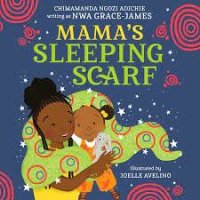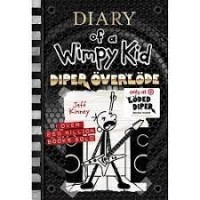How did two teenagers brutally murder an innocent child...and why? And how did their brilliant lawyer save them from the death penalty in 1920s Chicago? Written by a prolific master of narrative nonfiction, this is a compulsively readable true-crime story based on an event dubbed the "crime of the century."
In 1924, eighteen-year-old college students Nathan Leopold and Richard Loeb made a decision: they would commit the perfect crime by kidnapping and murdering a child they both knew. But they made one crucial error: as they were disposing of the body of young Bobby Franks, whom they had bludgeoned to death, Nathan's eyeglasses fell from his jacket pocket.
Multi-award-winning author Candace Fleming depicts every twist and turn of this harrowing case--how two wealthy, brilliant young men planned and committed what became known as the crime of the century, how they were caught, why they confessed, and how the renowned criminal defense attorney Clarence Darrow enabled them to avoid the death penalty.
Following on the success of such books as The Rise and Fall of Charles Lindbergh and The Family Romanov, this acclaimed nonfiction writer brings to heart-stopping life one of the most notorious crimes in our country's history.---from the publisher
368 pages 978-0593177426 Ages 12 and up
Keywords: murder, crime, nonfiction, lawyer, trial, 12 year old, 13 year old, 14 year old, 20th century
*************
“Because it’s murder by numbers, one, two, three
It’s as easy to learn as your ABCs”
– The Police (1983)
“On the morning of Wednesday, May 21, 1924, Chicagoans opened their morning newspapers to learn that baseball slugger Babe Ruth had joined the New York Army National Guard; President Calvin Coolidge had taken a chlorine-gas cure for his sore throat; and movie director Cecil B. DeMille’s sweeping silent film The Ten Commandments was opening at a movie house in the city’s Loop. Also in the news was a story about an attempted police raid on a bootleg brewery in the city. Tipped off by a ‘bought’ cop, the gangsters had dumped the incriminating evidence–thousands of gallons of beer–into the sewer just before the police arrived. Within minutes, a five-foot-tall geyser of beer had spewed into the air from a manhole. It lasted for more than an hour.
In the Kenwood neighborhood, the Leopolds’ chauffeur, Sven Englund, went downstairs to the garage and–as he did every weekday morning at seven-thirty–started Nathan’s Willys-Knight [automobile]. Englund drove it around to the side door.
Moments later, Nathan got into it. He had a big day ahead, starting with an eight o’clock criminal law class, followed by a nine o’clock lecture on nineteenth-century French poets, and then another law class at ten. After that, he and Richard would commit murder.
Nathan put the car in gear. He sped off to campus.”
Which would be tougher to confront–being the parent of a murdered child, or being a parent whose teen is making national headlines for murdering a neighbor’s child–just for the thrill of it? As a parent, the nightmare-inducing MURDER AMONG FRIENDS is a pretty tough book for me to write about.
As a father, I’ve always wanted the best for my kids: contentment; good health; self-worth; and feeling loved. A good education; a rewarding career; a great partner; and maybe, one day, children of their own.
Most teens who read MURDER AMONG FRIENDS will not have confronted the humbling experience of being a parent and making parenting mistakes. It will be easy for them to criticize the way that Nathan Leopold and Richard Loeb’s respective parents raised them, or, more specifically, how the parents hired servants to raise them. After all, Nathan and Richard were scions of two of the wealthiest men in 1920s Chicago. These men could afford governesses and provide their kids with monthly allowances that, in equivalent dollars, exceed many family incomes today.
Yes, Nathan Leopold and Richard Loeb murdered the child Bobby Franks, Loeb’s neighbor and second cousin, just for the hell of it. The murderous teens certainly did not need the ransom money they demanded, but it was a significant aspect of their exciting adventure. It was fun for them to create a series of clues that could have led to a big payout, had they not gotten caught.
Because Leopold and Lowe confessed to the crime, the criminal legal proceedings that ensued inevitably focused on whether the pair would be hanged for the murder, or whether they would receive life sentences. But this is where the parents’ wealth figured mightily. Their parents hired legendary attorney Clarence Darrow, who becomes a pivotal character in this unbelievable-but-true piece of history.
Knowing some barebones basics of criminal procedure will be sufficient to cause readers to gasp about the manner in which the press and other visitors had frequent, unsupervised access to the prisoners, and how law enforcement and the press worked together.
Nathan Leopold and Richard Loeb were seriously disturbed young people. As the author, at one point, concludes, Nathan had a psychotic disorder that might have been treatable with today’s medications and therapies. And as for Loeb,
“The same cannot be said for Richard, whom psychiatrists would most certainly diagnose as a psychopath. His symptoms were classic. Psychopathy is characterized by superficial charm, poor judgment, and a failure to learn from experiences. Psychopaths are attention-seekers and thrill-seekers. They lack remorse or shame, have a grandiose sense of themselves, lie pathologically, and are cunning and manipulative. Other people are merely objects to be used for the psychopath’s benefit. Psychopaths are coldhearted and calculating.”
Candace Fleming has won many awards for her nonfiction work. The depth of research that has gone into this one is stunning. A sophisticated and troubling tale, I’d recommend MURDER AMONG FRIENDS for high school students. It would also be a good recommendation for any brilliant and mature middle schoolers who will be able to understand the influence of Friedrich Nietzsche, whose theories were embraced by Nathan Leopold, and whose work is repeatedly alluded to. Arguably the most ambitious and powerful work to date undertaken by Ms. Fleming, MURDER AMONG FRIENDS is one hell of a ride.
Recommended by: Richie Partington, MLIS, California USA
See more of Richie's Picks <https://richiespicks.com/> https://richiespicks.pbworks.co






